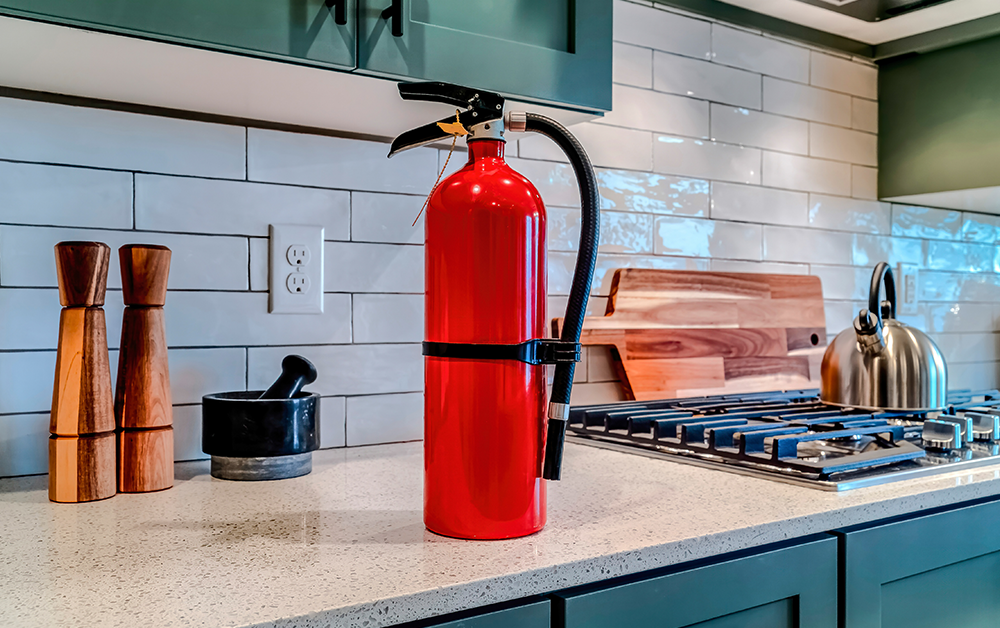
Fire Safety at Home: Prevention and Preparedness
Fire safety at home is a very important aspect of ensuring your personal safety and protecting your property. Home fires can start suddenly and spread rapidly, often leaving little time to react. By taking proactive measures to prevent fires and having the right supplies on hand, you can significantly reduce the risk and impact of a fire in your home.
Preventing Home Fires
Prevention is the first and most critical step in fire safety. Many home fires are caused by common household activities and appliances. Here are some essential tips to minimize the risk:
- Kitchen Safety: The National Fire Protection Association says that cooking is the leading cause of home fires. Always stay in the kitchen while cooking, especially when using high heat. Keep flammable items, like dish towels and paper, away from the stove. Also, regularly clean grease from stovetops, ovens, and exhaust fans to prevent them from catching fire.
- Electrical Safety: According to the U.S. Fire Administration, electrical fires are often due to overloaded circuits or the improper use of extension cords. Avoid overloading outlets and use surge protectors when necessary. Replace or repair frayed or damaged electrical cords immediately.
- Heating Safety: During colder months, heating equipment such as space heaters and fireplaces can pose a fire risk. The Consumer Product Safety Commission reminds us to keep anything that can burn at least three feet away from heating equipment. Use space heaters with an automatic shut-off feature, and never leave them unattended. If you have a fireplace, ensure it is equipped with a sturdy screen to prevent sparks from escaping.
- Candle Safety: According to the National Fire Protection Association, candles are a common cause of home fires, especially when left unattended. Consider using flameless candles as a safer alternative. If you do use real candles, place them on stable surfaces away from flammable materials, and always extinguish them before leaving the room or going to bed.
Essential Supplies for Fire Safety
While prevention is key, it’s also vital to be prepared in case a fire does occur. Having the proper supplies available can make the difference between a minor incident and a full-scale disaster.
- Smoke Alarms: Smoke alarms are your first line of defense in detecting a fire, says the National Fire Protection Association. Test smoke alarms monthly and be sure to replace the batteries regularly. Progress Residential will always take care of device repairs and replacement in our homes. Visit our page here for a reminder of what the resident’s responsibility is at home and what we’ll handle.
- Fire Extinguishers: Keep fire extinguishers in easily accessible locations, such as the kitchen, garage and near exits. The U.S. Fire Administration says that a multipurpose (Class ABC) extinguisher is ideal for most home settings, as it can handle fires involving ordinary combustibles, flammable liquids and electrical equipment. Familiarize yourself with how to use an extinguisher properly (PASS: Pull the pin, Aim the nozzle, Squeeze the handle and Sweep at the base of the fire).
- Fire Escape Plan: The American Red Cross suggests that every household have a fire escape plan that includes at least two ways out of every room. Practice the plan regularly with all family members, so everyone knows how to react in case of a fire. Designate a safe meeting spot outside the home and ensure that everyone is aware of it.
- Emergency Kit: As the American Red Cross instructs, prepare an emergency kit that includes items such as flashlights, batteries, a first-aid kit and important documents in a waterproof container. Keep this kit in an easily accessible location and ensure all family members know where it is.
Conclusion
By taking these steps and being prepared with the right safety supplies, you can protect your home and loved ones from the devastating effects of a fire. Regular maintenance, awareness and planning are key components of an effective fire safety strategy.



